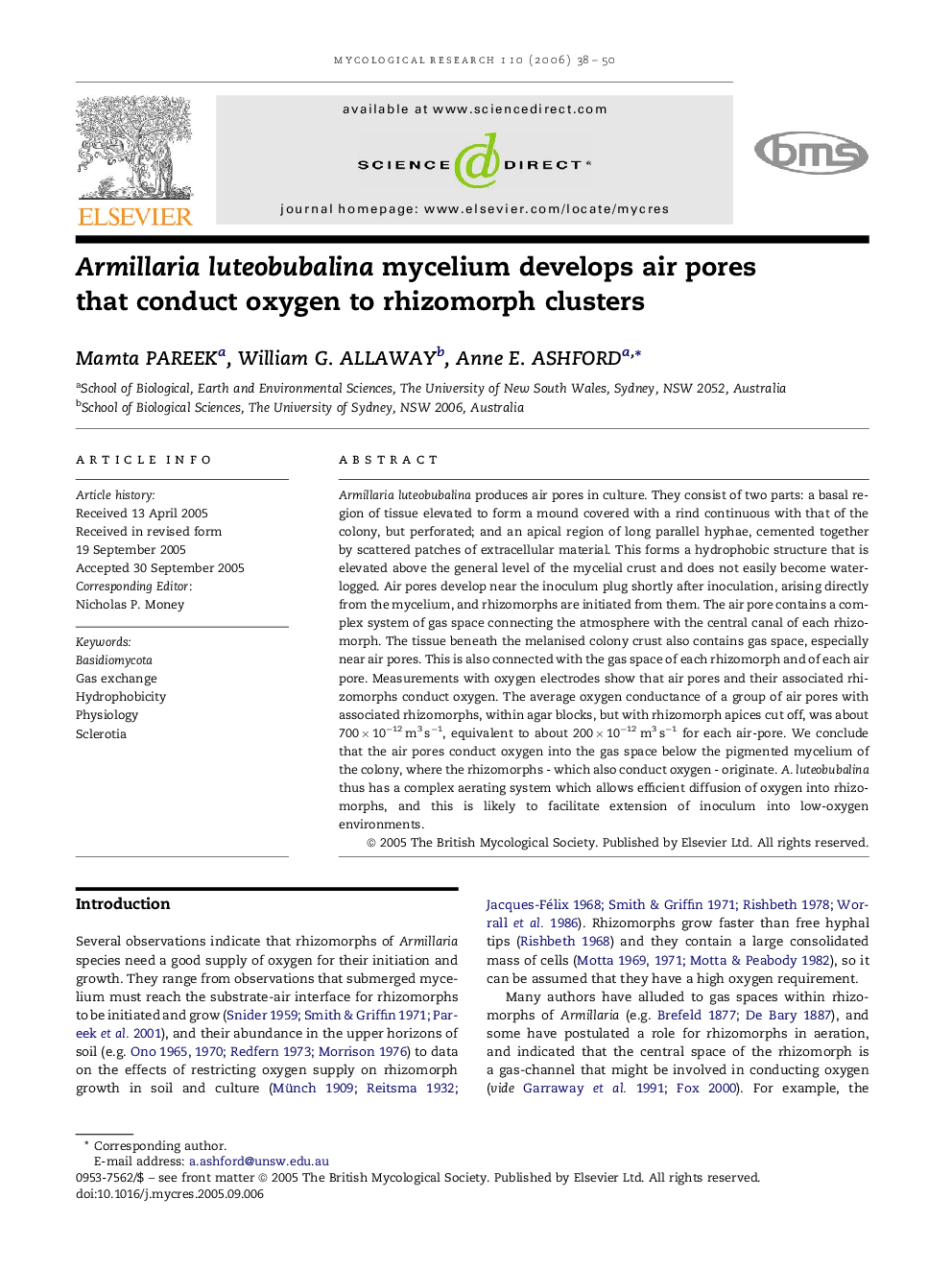| کد مقاله | کد نشریه | سال انتشار | مقاله انگلیسی | نسخه تمام متن |
|---|---|---|---|---|
| 4358232 | 1300138 | 2006 | 13 صفحه PDF | دانلود رایگان |

Armillaria luteobubalina produces air pores in culture. They consist of two parts: a basal region of tissue elevated to form a mound covered with a rind continuous with that of the colony, but perforated; and an apical region of long parallel hyphae, cemented together by scattered patches of extracellular material. This forms a hydrophobic structure that is elevated above the general level of the mycelial crust and does not easily become waterlogged. Air pores develop near the inoculum plug shortly after inoculation, arising directly from the mycelium, and rhizomorphs are initiated from them. The air pore contains a complex system of gas space connecting the atmosphere with the central canal of each rhizomorph. The tissue beneath the melanised colony crust also contains gas space, especially near air pores. This is also connected with the gas space of each rhizomorph and of each air pore. Measurements with oxygen electrodes show that air pores and their associated rhizomorphs conduct oxygen. The average oxygen conductance of a group of air pores with associated rhizomorphs, within agar blocks, but with rhizomorph apices cut off, was about 700 × 10−12 m3 s−1, equivalent to about 200 × 10−12 m3 s−1 for each air-pore. We conclude that the air pores conduct oxygen into the gas space below the pigmented mycelium of the colony, where the rhizomorphs - which also conduct oxygen - originate. A. luteobubalina thus has a complex aerating system which allows efficient diffusion of oxygen into rhizomorphs, and this is likely to facilitate extension of inoculum into low-oxygen environments.
Journal: Mycological Research - Volume 110, Issue 1, January 2006, Pages 38–50